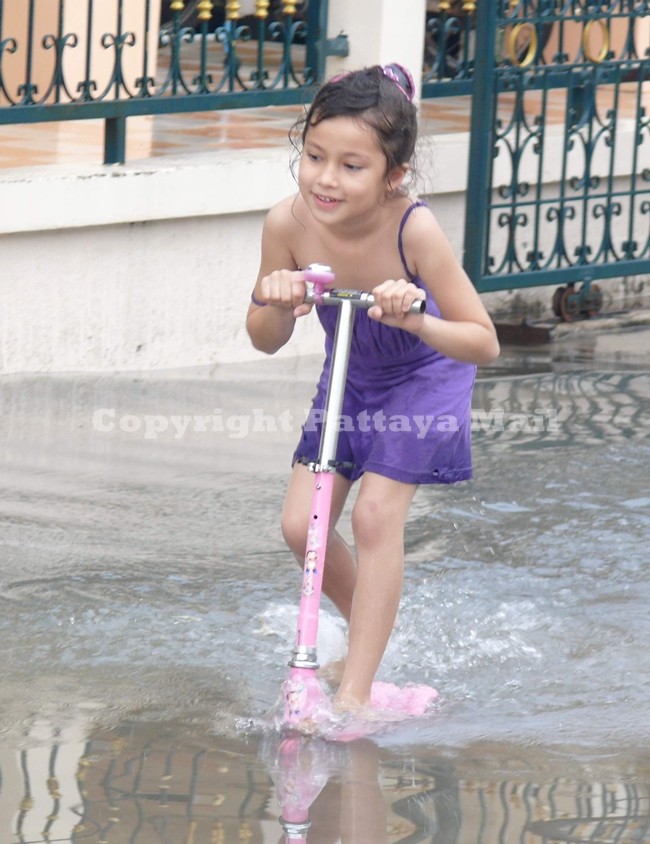
“Be Prepared” has always been the motto of the Boy Scouts Association, and a concept that they have zealously guarded. In fact, popular rumor has it that the Association took the American satirist Tom Lehrer to court after he sang a ditty with that title. For those of you who missed it, the final verse which raised their ire included:
“If you’re looking for adventure of a new and different kind,
And you come across a Girl Scout who is similarly inclined,
Don’t be nervous, don’t be flustered, don’t be scared.
Be prepared!”
So what has that got to do with photography? Quite a lot actually. Look at the photographs with the column this week. We’re in the rainy season, and the drainage system in this village could not cope, and flooding was prevalent (as usual). I was driving along and two children appeared, playing in the waters with their scooters. The photo opportunity was just wonderful and I had the camera in the car. What is more, I had space on the memory chip, the batteries were fully charged, and I was ready to shoot.
I took about a dozen shots, and here have published the two which I particularly like. They show two children, being children, and enjoying everything that being a child can bring to them. Something that we adults forget to do. But to get these shots it was necessary for me to “be prepared.”

I have written many times on the difficulties of photographing children. Whilst adults are only too happy to be photographed (especially Thai women), the attention span of children can be measured in nanoseconds, or milliseconds at most. Posed shots are always a letdown and you are more likely to receive a grimace than a natural smile. The longer you try, the less likely you are to get the shot you wanted. Photographing children and animals is fraught with danger and disappointment.
However, if it is just practice that you wanted, there are certainly many children to photograph. But here comes the problem. You may know you are trying to get the best shot ever of little Johnny, but little Johnny doesn’t know it. And what’s more, doesn’t care! With a short attention span, he is not going to stand still long enough for you to fiddle around with camera settings, flash settings and exposure mathematics. No, when photographing children, use the Auto setting on your camera, and that is one of the few times I will recommend that mode! To get a good kid pic means that you have to be totally set up and ready.
Let’s look at the equipment needed first. In general, the further away you get, the more natural the photograph you will get. So, a small zoom lens (35-70) works very well in this situation as you can get far enough away from the child without invading the child’s ‘personal space’ and producing shyness or forced behavior. In my case, I used a 135 mm lens for these shots (as I didn’t want to get my feet wet).
Some photographers swear by Auto-focus (AF) for this type of shot, but personally I find that the noise is distracting for children. The “whiz-whizz” attracts for the aforesaid three point four milliseconds attention span, and then they are off again. However, the newer AF cameras (lenses) are much quieter and are probably the best in this situation.
No, it is a simple case of being prepared and just jumping in to get the shots, don’t stage manage, and lots of luck! And look out for photo opportunities, even when it is raining.
 |
 |
 |





